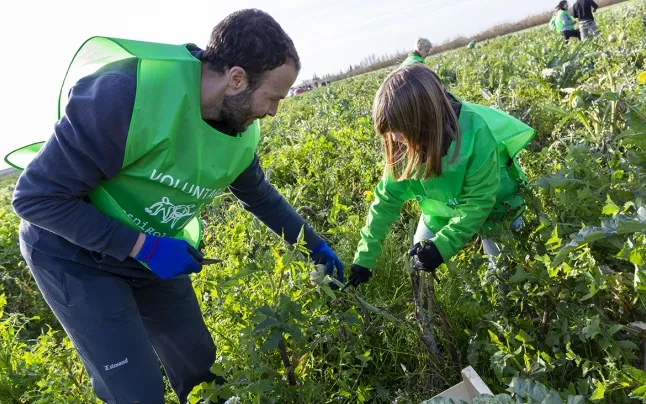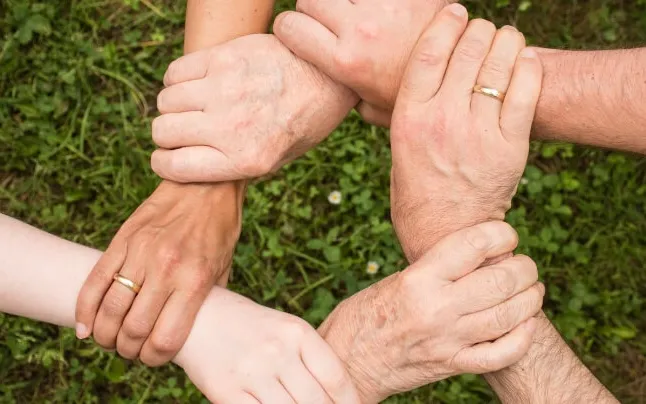These are projects where students of all ages participate in community service activities carried out by organizations.
Entities that want to carry out some task or action to help and contribute to the community , and at the same time work for civic education from the most practical side, can do so through Service Learning (APS) projects . These projects can be implemented by the same organizations, as well as by educational institutions or the administration.
Any entity can participate or coordinate in an APS project, it just needs to convey its area of expertise or work . Thus, the APS can be about many different topics, and can be carried out both in schools and institutes and in other areas of learning , both in the university and professional training centers as well as in schools and groups of adults .
Below are the keys and main characteristics of Service Learning , and it is specified how to launch a project of this nature from the entities. Data from the page ' What is the APS? ' from the website of the APS Promotor Centre , and the guides ' Guide for the Advice of Service Learning Projects ' and ' How to do APS in social entities? ' of the same center.
What is
Service Learning, despite integrating a great diversity of projects , is essentially defined by three keys . First, the programs that are part of it integrate service to the community as a response to specific social needs and the learning of content, competences, values or skills. Second, APS is a pedagogical methodology based on experience, participation, cooperation and reflection. It is a proposal that combines community service and learning in a single articulated project.
The third key is precisely that this project is organized through a collaboration between educational centers and entities in their environment, so that synergies are created where learning improves service and service gives meaning to learning. This, however, is not really a great innovation: both educational centers and organizations usually organize shared experiences of this kind, and they just need to systematize them .
To go even further, it must be said that the APS is not limited to designating a single project, but is a perspective through which to see education and the work of community cooperation. Implementing APS projects, therefore, opens doors to the social development of communities, as it discovers and reinforces points and values in common and opens spaces for exchange to facilitate the collective facing of challenges.
Characteristics
There are some aspects that any project that wants to fit into Service Learning must incorporate, and they have to do mainly with the design and execution of the program . First, the learning must be systematized and incorporated into both the center's curriculum and the service that will be provided, linking the content that will be learned, transversally, to the needs that are to be addressed. It is about working on skills that the students must be able to put at the service of the community, and that must be incorporated as a pedagogical dimension in the design of the project.
A second primary aspect is, obviously, the service . This must be defined as a real response to tangible needs of the chosen environment, inspired by reciprocity. For the APS, welfare-type projects that go beyond the mere task and seek a significant and transformative impact on all the agents involved must be avoided.
A third requirement that all APS projects must meet is the active participation of all the people who take part . This means that they must have a say in all phases of the program, from its definition by detecting needs to the proposals for improvement once the implementation is done.
The last fundamental element of all APS projects is reflection . This means that the people who participate, both from the educational center and from the organization, must be aware of what they are doing and its usefulness.
Protagonists of the APS
One of the advantages of APS projects is that they are very flexible , and offer many possibilities for action according to the social and educational needs that are to be covered . Thus, people of any age can participate in an APS project, they just need to be enrolled in an educational center : primary, secondary, high school, vocational training, university, adult schools, occupational training...
As for the entities , they do not need to work in a specific area related to education to implement or collaborate in an APS project. Education must be understood as a basic social function of any entity, so that, really, any area of work can accommodate and influence learning.
Thus, for their work of raising awareness , through the APS, entities can go beyond mere communicative and educational dissemination, making an effort to implement activities that create conditions for students to learn from the work they do for the community Thus, the APS puts the entities in a role of link between the knowledge offered by the curricula and social reality, which at the same time benefits the organizations both with the work done by the participating people and with the promotion that the project makes of the its values and mission.
Areas of work
The area in which it will be carried out in the service of APS projects can be of many topics . In fact, there are as many options as there are projects, as each organization carries out its work in its own context and further specializes in each project. However, the projects are always framed in broader areas , and of these, the most common in the APS are:
- Helping other people : direct care projects for groups at risk of exclusion, work with people with disabilities, support for migrants...
- Citizen participation : awareness-raising tasks to motivate participation in the neighborhood or town while working on civic commitment, creation and collaboration in the media, activities in participatory processes...
- Environment : these are all those projects dedicated to the conservation of the environment, such as recycling sessions or cleaning of spaces, care of fauna, implementation of energy saving...
- Generational exchange : these are programs that bring people of different ages together to facilitate the exchange of knowledge.
- Schooling support : support tasks for children and teenagers, school reinforcement, Catalan classes for newcomers...
- Cultural heritage : dissemination, conservation and recovery projects of cultural and artistic products and popular traditions.
- Health promotion : prevention activities and promotion of healthy habits, support for people diagnosed with a disease...
- Solidarity and cooperation projects : projects of a more international nature, dedicated to human rights, solidarity and cooperation causes...
Steps to make an APS project
Entities can promote or collaborate with an educational center or other training spaces to carry out an APS project. The most advisable thing is to design a normal and current project and introduce the particularities of the APS . Below are the steps to follow:
- Measure the entity's capabilities
The step before implementing an APS project is, first, to make sure that the entity has the infrastructure to carry it out and, second, to design a project or a collaboration that fits its needs possibilities . For this, it will be necessary to take into account the size of the organization (it is not the same to welcome a group of 5 students to a group of 30) and the resources, especially human, that it has available (it will be necessary for at least one person to dedicate all their hours or almost all in APS activities).
- Think service and participation
Once you are aware of the availability of the team and the organization's resources, you will need to think about the service that the people who will participate in the APS will carry out. Obviously, this service must be related to the organization's mission, but, in addition, it must be defined in detail which class of students will carry it out , defining a profile that responds to issues such as the places that can be offered, the age and educational area of the potential participants, which days and at what times the service will take place, who will supervise the activity, how the students will be welcomed and accompanied...
- Definition of learning
When thinking about the service, it will also be necessary to define what learning and skills will be worked on during the service. This means thinking about whether the students need to have any prior knowledge or do some training before starting the service, as well as listing in detail the knowledge that will have been acquired once the activity is over.
We will also try to take into account who will do the work with the students (teachers, staff of the institution, other professionals...) and what material will be necessary for them to carry out the service.
- Boost the activity
Once the bases of the APS have been defined, it will be time to start the impulse of the activity . This can be done by the same entity or an educational center. In the first case, the entity will have to find a center that is interested in its proposal. In the second, the entity will have to assess whether it can offer the service that the center requests . In both cases it will be necessary to take the previously indicated steps, in order to see if collaboration is possible.
To search for both educational center projects and training centers that already offer collaboration, the first step is to spread the word by taking advantage of the entity's network and, above all, start with the closest educational centers .
- Design a plan
Once contact has already been established with the educational center and it has been decided to carry out the collaboration, it is time to determine all the details of the collaboration and the activity , that is to say, to design the plan along with the center. It will be a matter of making a document that collects and specifies the agreement with the other party on many of the aspects foreseen in the previous steps, especially with regard to the contents of the learning and the activity. Some questions that the plan will have to answer are: who will be the interlocutors of the center and the entity? What activities will be carried out and at what time? What financial, material and human resources will be needed? How will the project be monitored?
A section will have to be dedicated to making a calendar of actions that also includes the welcome and farewell of the participants, as well as some moments of regular meetings with the representatives of the two institutions to follow up on the 'activity.
It is also recommended that the plan, although it must be well defined, is minimally flexible , to allow the introduction of contributions and suggestions from the people who will carry out the activity.
- Closing: Acknowledging the help
It will be necessary to consider how to dismiss the people participating in the APS project once the activity is over. The aim will be to take advantage of a session to detect the positive aspects of the collaboration and to thank them for the help, since this will have been beneficial not only for the students, but also for the entity and the school.
At this point, you can also use it to leave the door open for future collaborations , while underlining and highlighting the positive results.
- Evaluation
One last thing to do once the project has been completed is to evaluate its development and results , in a simple way, but involving representatives of all the parties that have participated. Some questions that can be raised for this phase are: Is it advisable to repeat the experience? Could it last over time? What modifications would need to be introduced to do this?







Add new comment